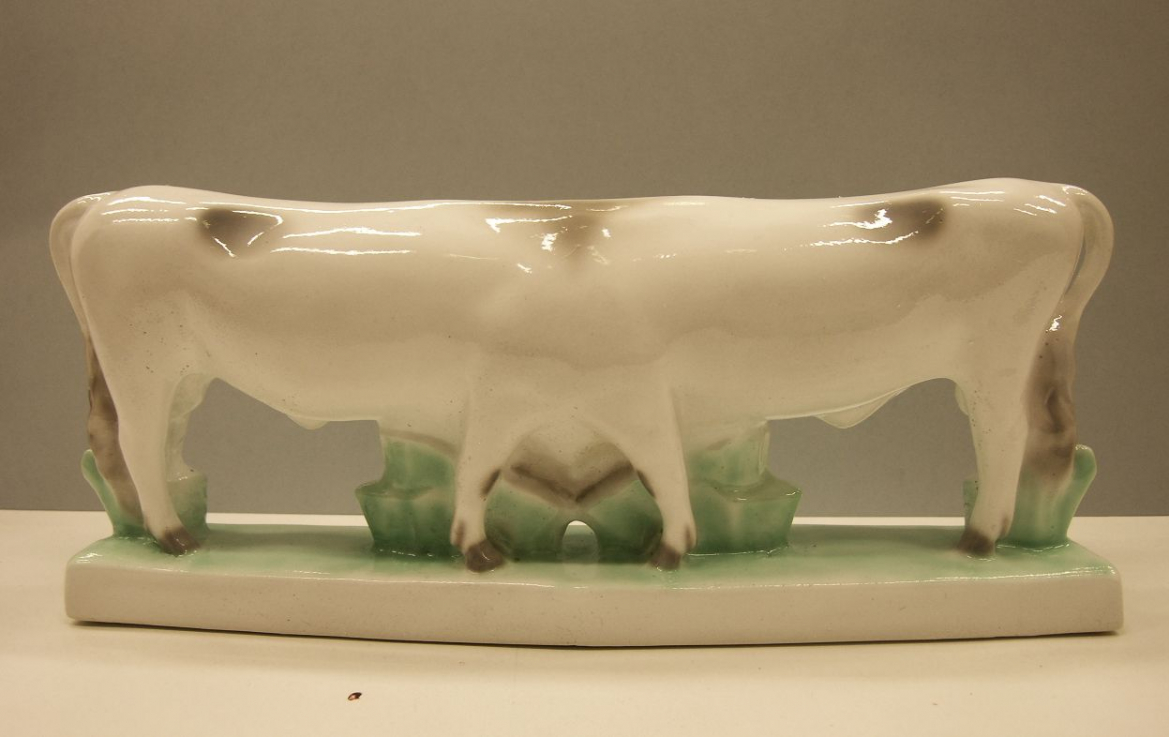PÉTER SZALAY’s tiny pseudo-knick-knack is part of a series made in 2014. The subjects of the quasi-sculptures are not drawn from the world of kitsch (no swans in love, no sad deer, no family of cats or squirrels eating), but rather “depict” strange, reflective genres (a little girl with a waterbuck, a boy with a rabbit or two grey cattle). The figures are “grown together” in an axisymmetrical way, like Siamese twins; the grey cattle, for example, have lost their heads in the process of being doubled. Behind the knick-knack mutant (a grey cattle duplicate), made of plastic but looking like porcelain because of the layer of varnish on the car paint, a Rorschach test is on the wall. Together, the sculpture and the test chart developed by the Swiss psychiatrist refer to a “cornerstone” of geometry and psychology, the mechanism of vision, and their paradoxical connection. Axisymmetric figures or shapes that are pleasing to one’s visceral aesthetic sense (such as the circle, the sphere, the square or the cube) create a sense of perfection, but such figures are used in the previously scientifically accepted test developed for individuals with primarily psychological problems. However, the test procedure carries credibility problems, as the result is highly dependent on the interviewer/evaluator’s personality, i.e. how he or she “sees” the patient. A psychosomatic or neurologically induced double vision disorder is a disturbance in the mechanism of vision where the two segments of reality (double vision) that we see are not transformed by the brain into a single spatial image, but are mentally superimposed or both are shown at the same time. So why do we believe our eyes?
